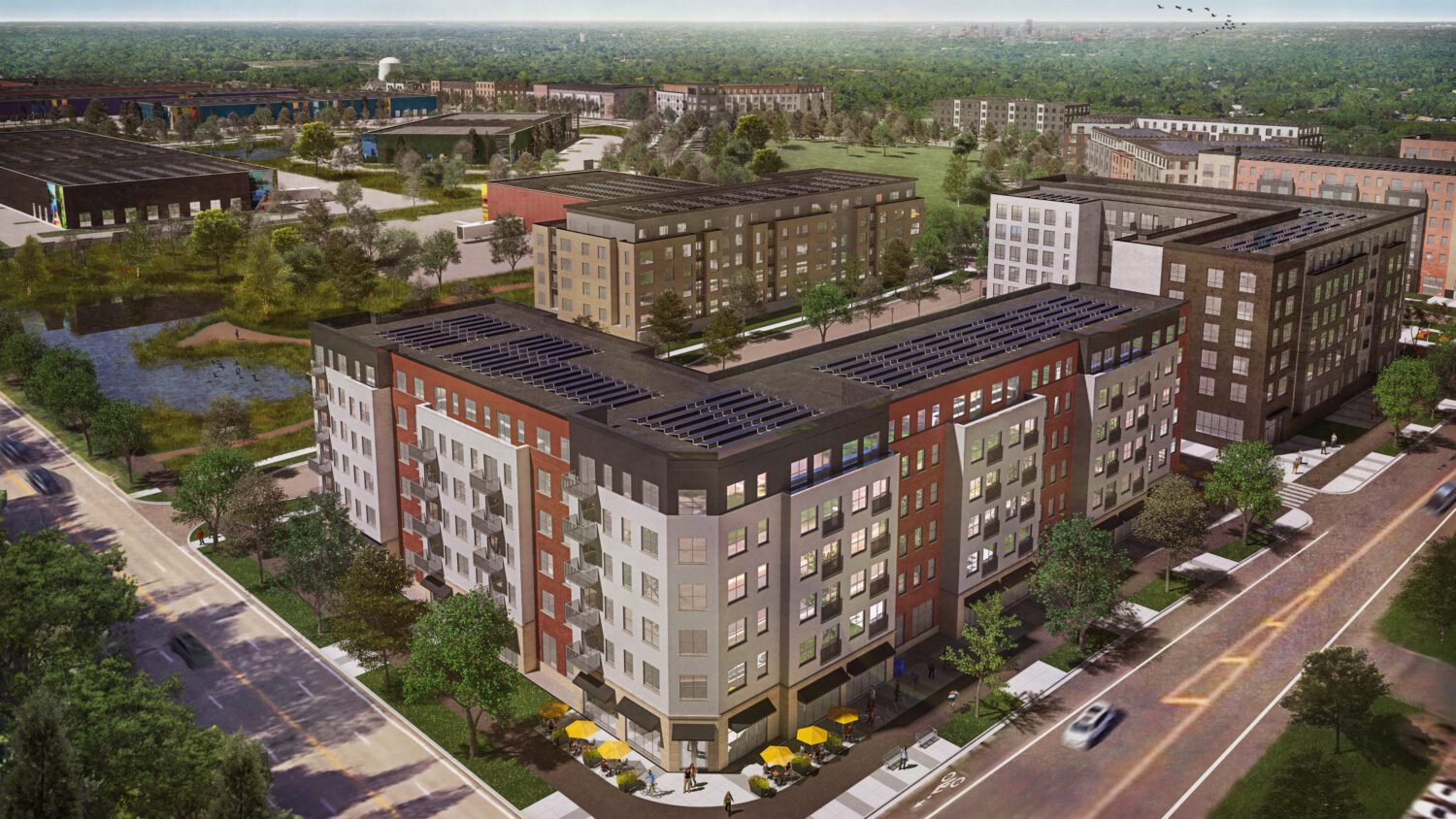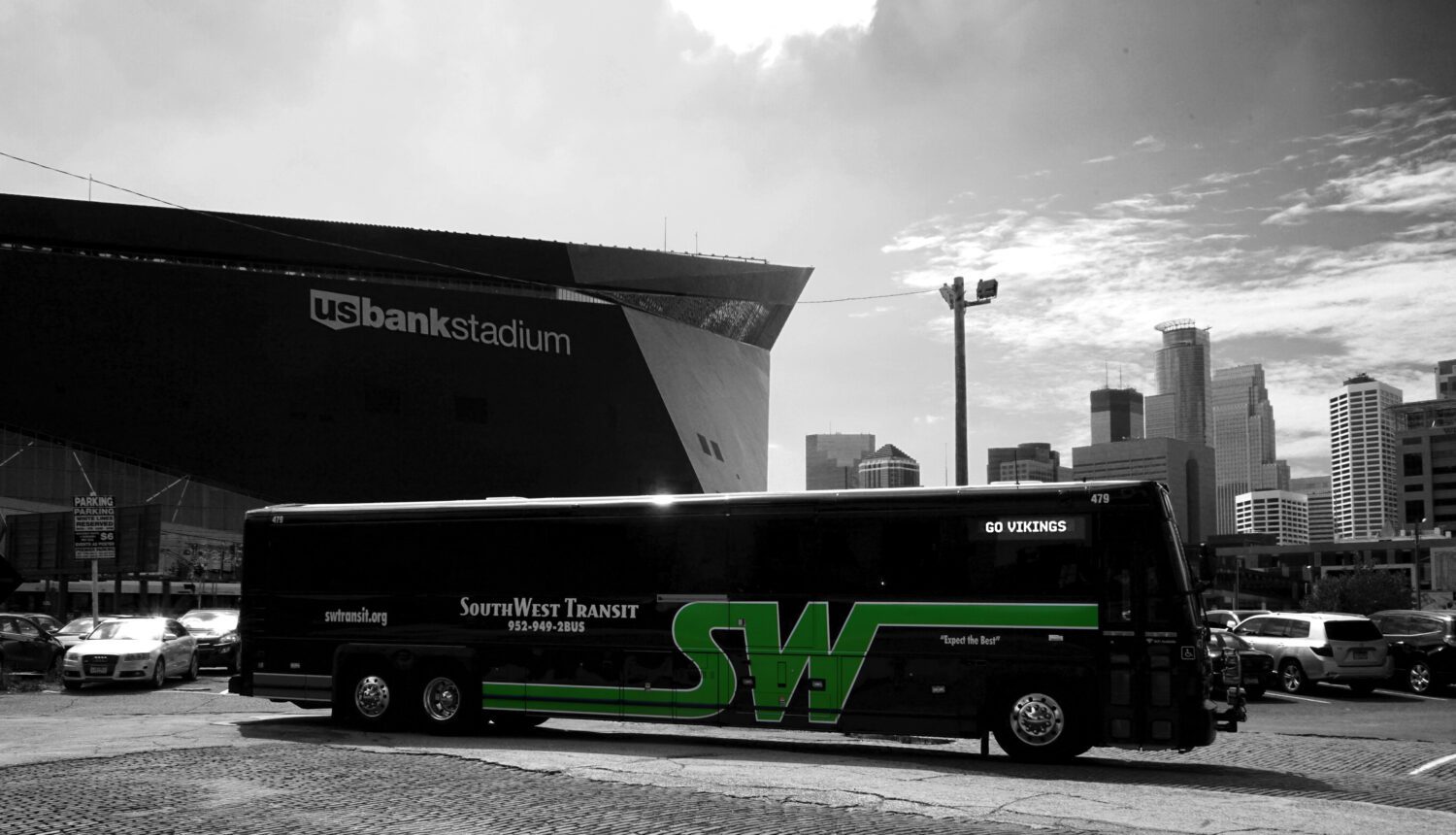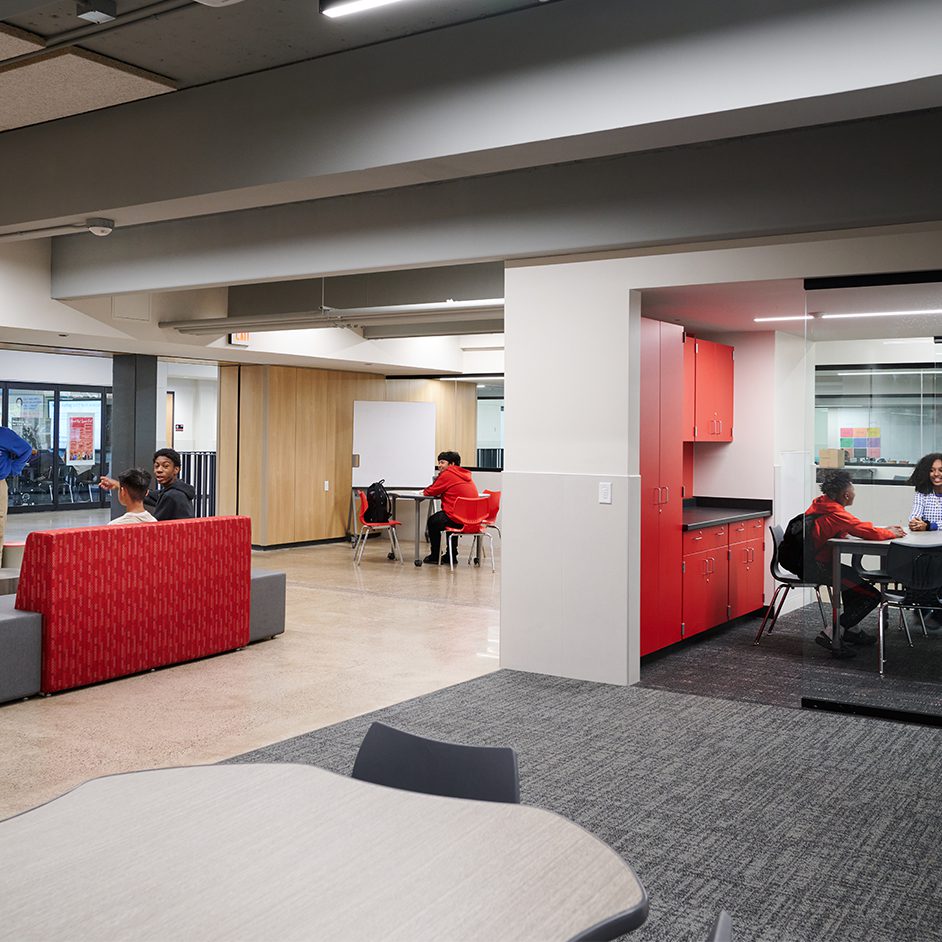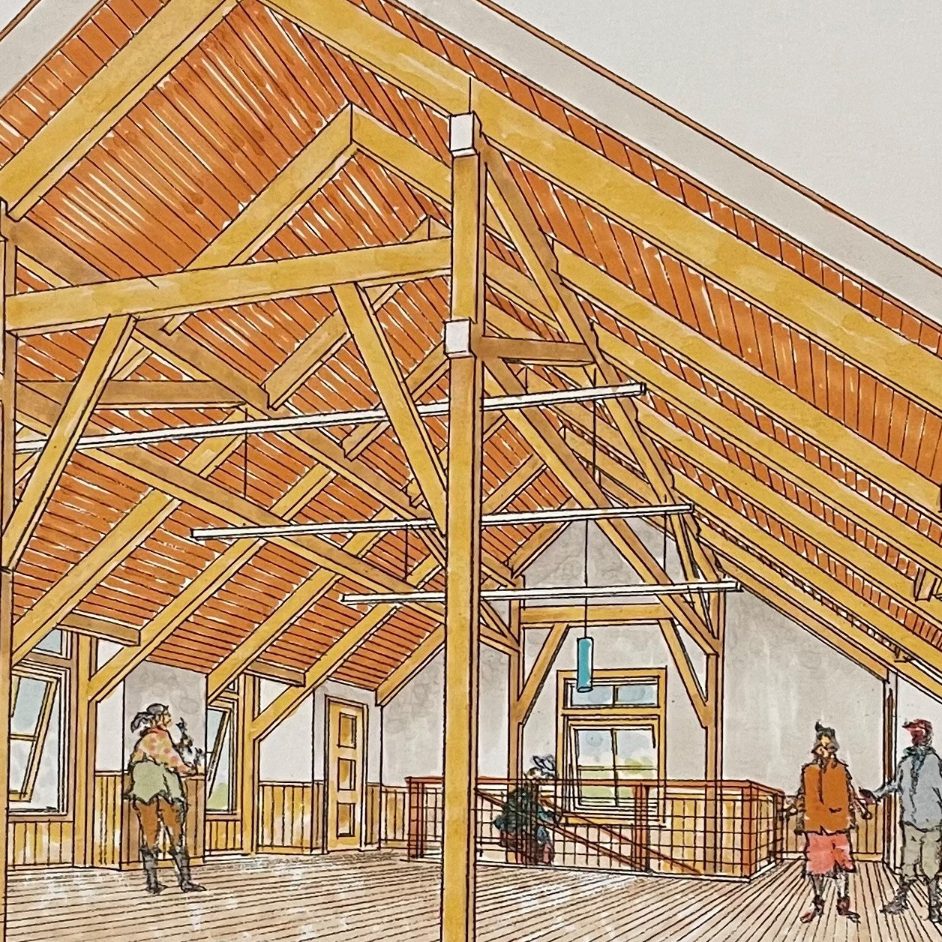
As the urgency to address climate change intensifies, local governments are stepping up where federal efforts fall short. Across Minnesota, many communities are pioneering strategies that not only curb emissions but also serve as models for sustainable development.
LHB has a long history of assisting cities, counties, and other clients as they transition to a lower-emissions future. Current examples include projects with the St. Paul Port Authority, the City of Arden Hills, Ramsey County, and the City of Eden Prairie — helping these entities as they seek to reduce their carbon footprints and expand production of renewable energy within their communities. Their efforts show that ambitious climate action can begin at any level: But it requires commitment and perseverance.

St. Paul: Building The Heights, a Carbon-Neutral Neighborhood
St. Paul’s East Side is home to Minnesota’s first large-scale, all-electric mixed-use development — The Heights. The 112-acre site, formerly the Hillcrest Golf Club, is being redeveloped by the St. Paul Port Authority to include 1,000 housing units and space for 1,000 jobs.
The project embraces comprehensive carbon-reduction strategies, including a thermal energy network, ground-source heat pumps, all-electric buildings, solar panels, and energy-efficient building design. LHB worked with the St. Paul Port Authority to develop ambitious guidelines for buildings within the community, targeting LEED Silver certification, 50% energy savings beyond state code, and a 10% reduction in embodied carbon.
The community will also feature electric vehicle charging stations, walkable retail, and bicycle infrastructure. Habitat for Humanity is already building townhomes on-site, and Xcel Energy and other partners are moving forward with commercial developments. By achieving precertification through LEED for Communities: Plan and Design at the Platinum level — the highest designation from the U.S. Green Building Council — The Heights demonstrates how urban redevelopment can be both environmentally and economically resilient.
Arden Hills: Scaling Up Sustainability at Rice Creek Commons
Arden Hills, a city located just north of St. Paul, in partnership with Ramsey County, is planning something even larger: Rice Creek Commons, a 427-acre all-electric community that builds upon the success of The Heights. The city/county partners recently approved sustainability guidelines created by LHB’s climate solutions studio, that prioritize strategies that minimize greenhouse gas emissions like ground-source heat pumps, rooftop solar energy systems, and materials with low embodied carbon.
The biggest challenge in Arden Hills lies in the housing mix — unlike The Heights, Rice Creek Commons will have many high-end single-family homes, where the transition away from natural gas is perceived to be tougher (e.g., home builders believe that people like gas stoves for cooking). Despite this, the community partners behind Rice Creek Commons are pushing to make the community fully electric to leverage Minnesota’s 100% clean electricity by 2040 standard.
LEED for Communities Platinum is again the target, which would make this project one of the only such certified developments in the Midwest. By applying proven sustainability principles on a much larger scale, Rice Creek Commons could redefine suburban development.

Eden Prairie: Encouraging Low-Carbon Development
In the southwest metro, Eden Prairie is also taking a regulatory approach to reducing community emissions. In 2020, the city worked with LHB to develop a climate action plan and adopted a community-wide goal of zero carbon emissions by 2050. With over half of emissions coming from building energy, the city recognized the need for building-related GHG reduction strategies and implemented a Sustainable Building Standard in 2023. The city recently updated its Standard to include the option for all-electric developments, offering an innovative pathway to support city goals without the extensive documentation requirements of traditional green building certifications.
In recognition of the need for urgent climate action, governments around the world are setting policies to decarbonize the built environment. For example, the European Union will require all new construction to have zero on-site emissions starting in 2030. Cities like Eden Prairie are in the lead in the U.S.
A Blueprint for Broader Change
By embedding climate-conscious choices into building policy, local action in St. Paul, Arden Hills, and Eden Prairie is helping ensure that sustainable development becomes the norm. The success of these efforts could reverberate well beyond Minnesota, offering practical models for communities across the country and around the world as they prepare themselves for the future. ▪
Does your community need help with climate action? LHB’s climate solutions studio has ideas. Contact studio leader Maureen Colburn to start a conversation.


